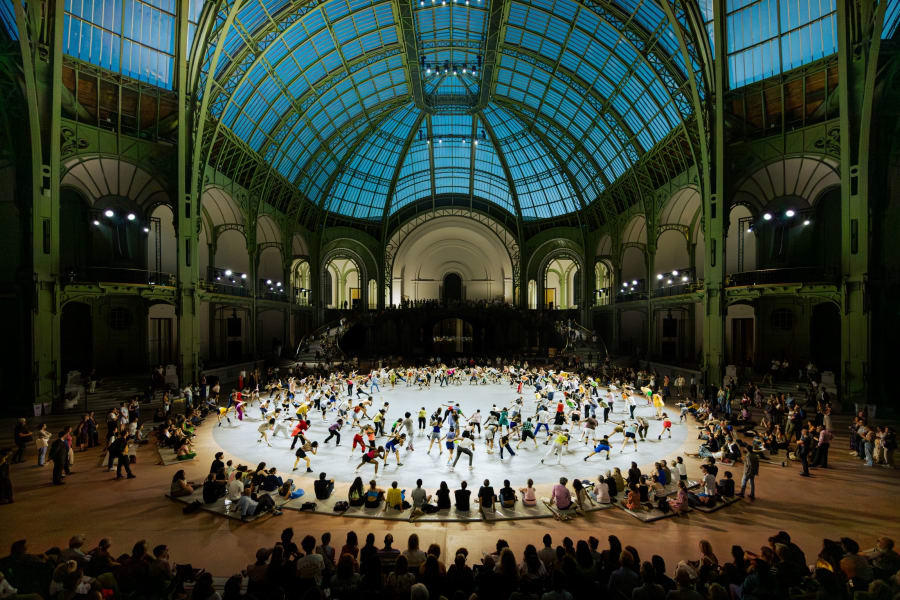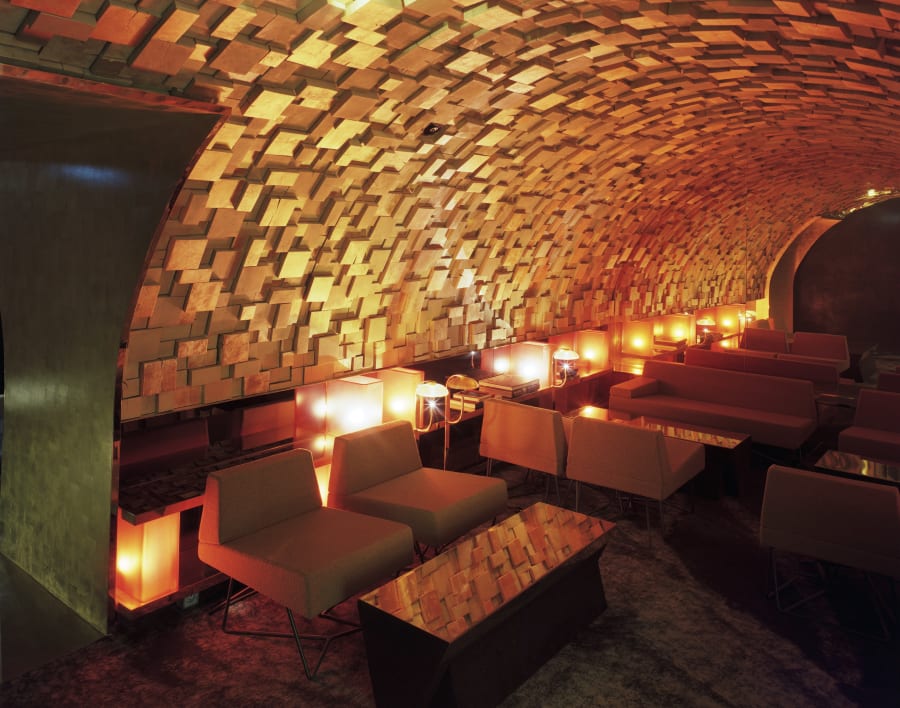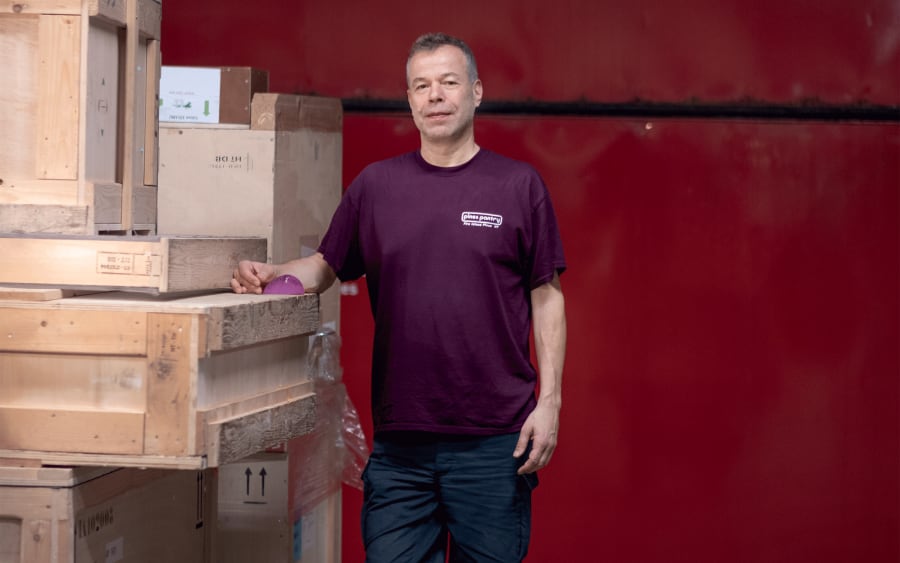In 1971, Renzo Piano and his partner Richard Rogers won the international architecture competition launched by President Pompidou. Just around the corner from the Centre Pompidou, in a parallel street, is the home of Piano’s Parisian agency, the Renzo Piano Building Workshop. Today, the architect still walks from the nearby Place des Vosges, where he lives, to his office; an opportunity to glimpse from every street corner the ‘cumbersome child,’ as he calls it, that is the iconic Centre Pompidou building. ‘I always say Beaubourg,’ Piano jokes.
The indefatigable winner of the 1998 Pritzker Prize continues to work with his team on numerous projects, including recent creations such as the Paris Courthouse and the Academy Museum of Motion Pictures in Los Angeles. Witty and erudite, we meet in his firm’s hive of activity, where he recalls the genesis of the Centre Pompidou, his companionship with his friend Richard Rogers (who passed away in December 2021), and the renovation of the Centre Pompidou, scheduled to start in 2025.
In 1971, when you and Richard Rogers won the international competition, you were young, practically unknown architects…
We were just kids! At the time, Richard and I had this really small London firm just off Oxford Street. There were only three or four of us in it and whenever there were clients, we called on everyone to make it seem bigger. For the competition, we played around for a month and made lots of drawings. It was a time of protests; May 68 had left its mark and there were new ideas. In London we had the Beatles, miniskirts, and long hair; a real whiff of freedom. We designed our project in 1971, just 3 years after May 68 – the bare minimum to reflect on what had happened. Of course, our idea of an ‘urban machine’ was new, but most of all it was derived from the starting brief of what was a state project. This idea of a centre culturel had been floating about in the air for a while, since the early 1960s in fact with André Malraux. Designing a sort of open, modern cathedral in the middle of Paris was a crazy idea, in the good sense of the term, but most of all it was a courageous idea. We managed to seize the moment and connect with the zeitgeist.
Jean Prouvé chaired the jury that selected your project, and there were other big names, such as Oscar Niemeyer and Philip Johnson…
Jean Prouvé on the jury was a symbol of liberty, he didn’t belong to the academic system at all. It was first of all for him that we wanted to compete, but also because it was a competition that was open to everyone, with an unbeatable, incomparable, and unpredictable jury. A jury that was composed to come out and say, ‘go on then, tell us what to do.’ It was courageous on the part of a head of state to appoint a jury like that, in search of completely free minds. Of course, we didn’t know there would be 681 participants in the competition, but we knew it would be enormous. Before taking part, we told ourselves we were sure to lose – and perhaps that’s the reason we won! What was interesting was to ask ourselves what we could do if we had a magic wand; everything was possible. I was 33 at the time and Richard was 37, we were young, we didn’t hesitate, we just went for it. We had felt in an empirical way that it was the moment to create a sort of factory, a laboratory, a space liner. At the time, we didn’t go to museums ourselves, which were slightly intimidating places.
Our idea was to make a strange kind of ocean liner that was open, transparent, and breathing as people moved about like blood in the veins. We wanted to ignite a spark of curiosity. Lots of people screamed in the beginning, some said it was a ‘culture supermarket,’ a ‘factory,’ a ‘refinery,’ but there was nothing intimidating about our creature. Inside was a miracle.
Your building has become iconic, a symbol of Parisian modernity…
It took 10 years, even longer, for our building to become a part of the city. We had the somewhat miraculous idea of designing a ‘square.’ And we were the only ones out of 681 architectural projects to propose that. All the other projects took up all the available space. Straightaway, we said we had to have emptiness, a public space. The square is the icon of the city, a place where people meet, where disparities and differences are diminished; where the urban comes to the fore. This idea of a square helped Parisians to understand the building. And you really do need space to land a spaceship!
What are your influences?
A delicate question. You know, at my age, I find that I don’t really exist on my own – I am the sum of everything I’ve seen, the people I’ve met, the journeys I’ve made, the beauty and the nature I have enjoyed. Jorge Luis Borges wrote beautiful words, something like ‘every creative gesture comes from somewhere suspended between memory and oblivion.’ I don’t really want to try too hard to understand where things come to me from.
I’ve always been touched by and passionate about light. I was born on the Mediterranean, in Genoa, I have always had light in my eyes, the light of the Mediterranean, a special sea that has vibrations, color, voices. My father was a modest builder; I grew up on building sites. When I was 6 or 7 years old, he used to take me with him. I would sit on a pile of sand, and he would say ‘don’t move, stay there,’ and I participated in the miracle of building. After mass on Sundays, my father always took me to the harbor. He was a man of the earth, but he loved the harbor. There were liners in Genoa harbor after the war, sort of monsters, beautiful slow-moving monsters – machines that moved! That’s it, all you’ve seen, the people you loved, the living, the dead, you are the sum of all that.
What do you think of the forthcoming renovation of the building?
It’s essential to do these works, even if I like Beaubourg with the patina of time. There were previous works in 2000, now there are others, but the spirit remains the same. I like this idea that every quarter of a century, someone comes along to take care of adapting this tool to culture. I also like having made a building that is capable, every quarter of a century, of questioning itself while still remaining itself.
Beaubourg isn’t a building, it’s like a bridge, something that will be there for thousands of years. That’s what Monsieur Pompidou told us when we met him. We had just won the competition. Richard and I had put on ties, I had a jacket I’d been lent, which was too small, Richard too but no shirt. He was wearing a t-shirt. Monsieur Pompidou spoke nicely to us: ‘are you aware that this building will live for 500 years?’ Richard and I looked at each other. We had never made something that had lasted more than 6 months!
Your firm is just next to the Centre Pompidou. You can’t get away from it. The building acts as a sort of magnet, doesn’t it?
I see it every time I go outside. I see it when I walk home. But I am never tired of it! I often joke that I’m sort of the Quasimodo of Beaubourg. We love our children, this one is perhaps the most cumbersome! I also love the others. I often travel to see them, to rediscover them. I always ask this question, the one we also ask ourselves about our own children: ‘are they happy?’ I think Beaubourg is happy.
This article is part of an ongoing editorial collaboration with Centre Pompidou. Read the original article here.
Séverine Pierron is the editor in chief of Centre Pompidou’s Magazine.
English translation: Centre Pompidou.
Published on September 16, 2025.
Caption for header image: Aerial view of the Centre Pompidou. Courtesy of Centre Pompidou.


